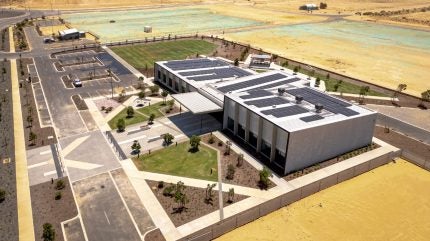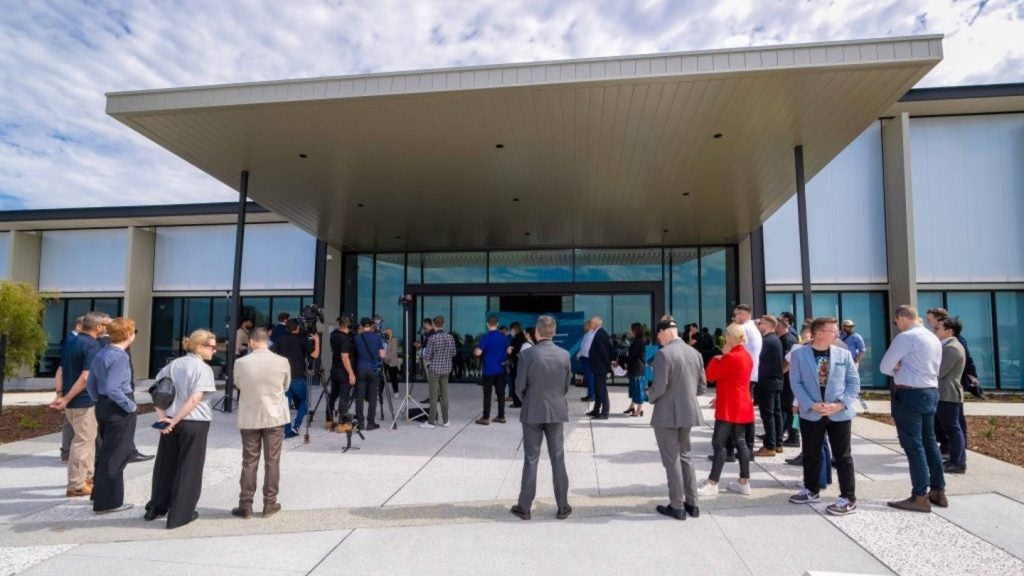
The automation of mining is not new, but it has gained pace in recent years as technologies have evolved and pressures around efficiency, energy constraints and decarbonisation have intensified.
Renu Kannu, National Robotics and Innovation Lead at the Australian Automation and Robotics Precinct (AARP), is keenly aware of some of those challenges and the significance of infrastructure in supporting innovation in robotics, automation and zero-emissions technologies.

Discover B2B Marketing That Performs
Combine business intelligence and editorial excellence to reach engaged professionals across 36 leading media platforms.
She believes that technology – robotics, automation and electrification, for example – have a key role to play in decarbonisation, and that Western Australia (WA) has a “massive” opportunity to help shape that future.
Hoping to position itself as a leader for change, the AARP is Australia’s single biggest trial, test, demonstration and showcase ground for robotics and automation.
Spread across 51ha in Neerabup, just 30 minutes north of Perth, the AARP was developed and is managed by DevelopmentWA, the State Government of WA’s land development agency.
The site boasts state-of-the-art facilities that aim to drive advancements in autonomous systems, robotics and zero-emissions technologies.

US Tariffs are shifting - will you react or anticipate?
Don’t let policy changes catch you off guard. Stay proactive with real-time data and expert analysis.
By GlobalDataComprising its state-of-the-art headquarters and six testbeds, the facility supports businesses regardless of size or background – from innovative start-ups and established small to medium-sized enterprises to national big hitters and global giants.
The testbeds, or “zones” as they are known, each have a specific purpose. The 3ha Flex Zone is ideal for flexible and adaptable technology applications including drone and smaller ground-going robotics. The Urban Zone is a 6ha space designed to replicate urban road conditions for the testing and trialling of heavy haul and industrial vehicles.
Another 3ha testbed, currently under development, is the New Energy Zone for the development of clean energy technologies including renewable power capabilities. The 2ha Demo Zone, sited next to the headquarters, will showcase newly developed technologies and host events and open days.
Testing autonomous tech at a replica mine
The mining and resources industry, which Kannu says has shown great interest and is the state’s “sector of strength”, will seek to make use of the 22ha Dirt Lab Innovation Mine, a concept developed through an industry co-design process to replicate a mine site environment.
There is currently a drill pad and a short haul road being utilised. The largest of all the zones, this area will “accelerate innovation in real-world conditions, without the obstacles of accessing a production environment”.
The site is particularly timely given that, as Kannu points out, automation and robotics are “no longer just a nice thing to have” in mining. The reality is that if miners “don’t get on board” they will simply “miss out”, she says.
Said to be the precinct’s first major industry partner, Perth-based IMDEX, a leading global mining technology provider to drilling contractors and resource companies, has built a drill pad at the Dirt Lab Innovation Mine. It says the pad – which it will also use and provide all maintenance for – will offer testing and collaboration opportunities for others too.
On announcing the partnership in 2023, IMDEX’s then-CEO and current managing director, Paul House, said: “While we operate globally and have an unrivalled presence on all major mining operations, WA is home to some of the world’s major mining companies, so having the opportunity to develop and promote our technology locally is an additional benefit.”
Perth and Northern Ireland-based technology provider Tribe Tech has also taken advantage of the AARP, using it to develop a fully autonomous reverse circulation drilling system. The innovation is, it hopes, the next step in autonomous drilling for blast holes, being “the first autonomous system specifically designed with safety in mind for geological sample collection”.
Real-mine testing was proving to be fraught with challenges, not least the logistics of getting to and from the mine, and the “extremely restricted testing windows”, which had to account for mining operations.
This “cumbersome and inefficient development cycle” was further complicated by the need to dismantle and move equipment back to base when refinements were needed, only to go through the process again. The company said this was not only time-consuming and resource-intensive but also significantly extended the development timeline.
At the beginning of 2024, Tribe Tech teamed up with the AARP; first to further develop its sampling system through a simulated drilling environment, and then to test the entire drill rig, having been given the green-light to drill up to 60m deep on site, providing “genuine drilling conditions”.
Tribe Tech’s Derek Loughlin previously spoke of the collaboration: “The facility’s location, combined with the amount of land available and the supportive [AARP] team has created the perfect environment for our development work. They have truly been fantastic partners in helping us bring this innovative technology to life.”
Potential benefits of the AARP
Australia’s largest robotics and automation precinct received A$28m ($16.8m) in State Government funding with the intention of attracting other industries in addition to mining and resources. Since opening, industries such as advanced manufacturing, agriculture, construction, defence, logistics, oil and gas, and space are now utilising the precinct.
According to Kannu: “In partnership with the University of Melbourne, we conducted a study with early users of the AARP to ascertain the economic impact of innovation infrastructure.

“Early forecasts suggest that the AARP will contribute between A$450m and A$600m in economic impact to WA by 2030, with 80% of that value benefitting local and regional businesses.” She adds that over that time, the AARP expects to attract 40 new ventures to WA, which in turn will lead to more than 850 new high-tech jobs.
Whilst the testbeds provide practical experience, the facility also offers classroom-based learning and training facilities, which enable links to academia.
Kannu believes that with learning and skills development taking place where some of the industry’s leading employers are, it is the perfect opportunity to identify and nurture the talent of the future.
In addition, having those stakeholders together in one space means companies – large and small, just starting out or well established – can collaborate on the challenges of today, building the solutions of tomorrow.
That invitation is open to all, from across Australia and globally. Kannu says the AARP wants to attract national and international players and leaders in their field to set up or even relocate to WA.
“International engagement is very much a part of our strategy,” she says. “We want to attract incredible businesses and talent… [for them] to choose WA as home, to set up their operations here, and to be proximate to engage with customers… hiring locally, spending locally, purchasing property locally, and so on.”
It seems the AARP has big ambitions and, together with WA, a bright future shaped by the leaders of today and talent of tomorrow. “We are very excited for the future,” Kannu concludes, “for continued growth, the opportunity to further scale up and to deliver real impact for the state.”





